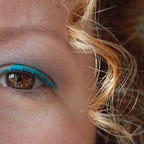Can We Take the Lessons of Pokemon Go and Tell Stories Instead?
In the spring of 2020, the UK was working from home, not leaving their houses, and living in a strange online world that involved watching the news every evening while worrying about everything. Some people were getting interested in playing Pokemon Go again, even if you could just look around your local area.
I was working from home, teaching undergraduates the English Language and Linguistics degree at the University of Kent. I was also spending some time writing fiction, as I have done for many years — mainly, I wrote for Hinged, which is a publication that provides weekly prompts and some of the most interesting and thought-provoking short fiction online. I’ve spent over a decade immersing myself in stories, narratives, video games, and how stories are told in the digital world. I have a doctorate in Linguistics — all about how narrative works in video games. And strangely, now trapped in lockdown, I saw an opportunity to use some of that knowledge to put some of my digital stories into the real world — even if our access to it was limited. I thought I could take elements of PokemonGo and use that to share my writing inspired by the people and places around me.
That was my plan — to bring online stories into the real world and leave them to be found by the public as they took their daily (socially-distanced) walk. The stories themselves were mainly pieces of short fiction I’d written for Hinged, inspired by real places around the village where I was living. Having studied Fine Art at university years ago, I understood Site-Specific art pieces that interact with their placement in their space and offer a different perspective on that space. One piece I’d written was about an elderly woman who shopped daily in the Co-Op but dreamt of the circus trapeze, another about an elderly man who obsessed over his garden and his neighbor’s garden; each piece explored the reality of people we might pass each day but never really know.
I took the stories and hosted them online with a free WordPress account. Each story linked back only to the contents page and nowhere else — going against all the usual ideas of making a site found and accessible with plenty of keywords and outgoing links that would enable search engine web crawlers to find and record it. This was so I could easily track my reader numbers, as the only way to find the site was through QR codes that led directly to the story webpages, and these codes could be found around the village. Rather like a simple version of PokemonGo, readers of these stories would need to search for them in the real world.
Each story’s QR code was printed and stuck onto the underside of a painted pebble. Each pebble was different in design, reflecting some elements of its story, and with a brief instruction to scan the QR code and return the pebble to where it was found. The stories, showing a hidden reality of villagers’ lives, were quite literally hidden under stones.
As this was a pilot project, only five stones were hidden around the village, with all but one being stolen soon after placement — one stone was even replaced with an identical design and QR sticker, but the replacement was also taken within hours. I hadn’t initially told anyone about the project as I wanted to discover if this would work effectively as guerilla storytelling, but the small number of stories and stones meant that it was almost entirely overlooked. In April 2020, I posted in the village Facebook group explaining what was happening and how to access the stories. Over 80 members of the group interacted with my post, a number commenting that they would now begin looking for the stones.
The analytics from the WordPress site told a similar story — over 50 visitors in the month that the stones were in place, with some visitors returning multiple times to read the story they’d found. One stone in particular, placed near the railway station, had been read more than the others — this was not the one stolen twice. The twice stolen stone story was read only three times.
Despite this project receiving positive feedback from the village’s Facebook page, there was not a huge engagement with it. Various factors fed into this lack of reader interaction, but mainly the technology necessary to access the stories — a QR code reader — was, and still isn’t a common app for people to have on their phones. Additionally, many mobile phone owners are understandably wary of following a link or code to an unknown website where they might be accessing or downloading something unintended and unwanted. The practical difficulties of using painted stones also meant that their theft was unsurprising, and also, the QR code stickers were initially not weather resistant. These practical difficulties were minor, but the technological difficulty remains — without some form of reliable guarantee that the QR code is safe, readers will not access them.
Even though this project was not as successful as I’d have liked, it did prove useful and offered insights into digital online safety fears as well as a lack of interaction with found technology. It may be the case that with advertising and a known reliable brand or partner of some sort, there would have been more uptake with the QR codes. However, to advertise the stories and the stones would have gone against the ethos of guerilla storytelling. Perhaps dispensing with the stones and using QR stickers alone, dotted around the village, would have intrigued more people. Alternatively, as was suggested by many, sell the stones online and let the purchaser read the story instead.
